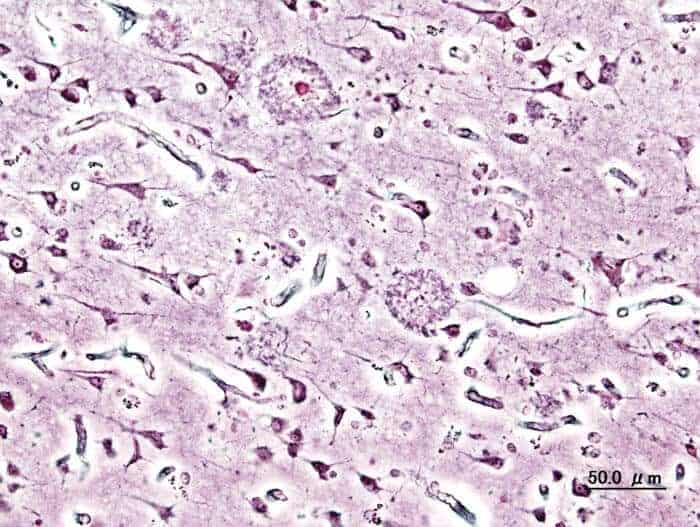Alzheimer’s-affected brains are riddled with so-called amyloid plaques: protein aggregates consisting mainly of amyloid-β. However, this amyloid-β is a fragment produced from a precursor protein whose normal function has remained enigmatic for decades. A team of scientists at VIB and KU Leuven led by professors Joris de Wit and Bart De Strooper has now uncovered that this amyloid precursor protein modulates neuronal signal transmission through binding to a specific receptor. Modulating this receptor could potentially help treat Alzheimer’s or other brain diseases. The results are published in Science.
More than 30 years have passed since the amyloid precursor protein was first identified. In the late 1980s, several research teams across the globe traced the protein fragment found in amyloid plaques back to a gene located on chromosome 21. The gene encodes a longer protein that is cleaved into several fragments, one of which ends up in amyloid plaques.
Decades of research have focused on the cleavage process that leads to the formation of the amyloid-β fragment and its subsequent aggregation, in the hope of identifying new therapeutic avenues for Alzheimer’s. Meanwhile, an important question remained unanswered: what does the rest of the amyloid precursor protein actually do?
In search of a binding partner
To answer this question, Dr. Heather Rice, a postdoctoral researcher in the labs of Joris de Wit and Bart De Strooper at the VIB-KU Leuven Center for Brain & Disease Research, set out to identify the nerve cell receptor that interacts with the amyloid precursor protein.
“We knew that the amyloid precursor protein exerts its role through the part of the protein that is released outside of the cell. To understand its function, we needed to look for binding partners located on the cell surface,” explains Rice.
The researchers identified a receptor present at the synapse, the structure where two different neurons connect to pass on signals. “We found that the secreted part of the amyloid precursor protein interacts with a receptor called GABABR1a, and that this in turn suppressed neuronal communication at the synapse,” says Rice.
Modulating signal transmission
“Although mutations in the amyloid precursor protein in familial cases of Alzheimer’s disease all affect the production of amyloid-β, we don’t really know whether other aspects of the protein’s function contribute to Alzheimer’s as well,” says Bart De Strooper. He believes that the new findings add a fresh perspective to previous studies on the amyloid precursor protein and Alzheimer’s disease. “The newly identified role of the amyloid precursor protein may underlie the neuronal network abnormalities we see in mouse models of Alzheimer’s disease and preceding clinical onset in human patients. It is exciting to consider that a therapy targeting this receptor might attenuate these abnormalities in people with Alzheimer’s.”
De Wit adds that the clinical implications may reach much further than just Alzheimer’s: “Interestingly, GABABR signaling has been implicated in a diverse range of neurological and psychiatric disorders, including epilepsy, depression, addiction and schizophrenia. Now that we know how the secreted part of the amyloid precursor protein modulates neuronal signaling through the GABAB receptor, we could think of new ways to develop drugs that can restore this type of neuronal signaling in other clinical contexts.”
Publication
Secreted amyloid-β precursor protein functions as a GABABR1a ligand to modulate synaptic transmission, Rice et al., Science 2019
If our reporting has informed or inspired you, please consider making a donation. Every contribution, no matter the size, empowers us to continue delivering accurate, engaging, and trustworthy science and medical news. Independent journalism requires time, effort, and resources—your support ensures we can keep uncovering the stories that matter most to you.
Join us in making knowledge accessible and impactful. Thank you for standing with us!

